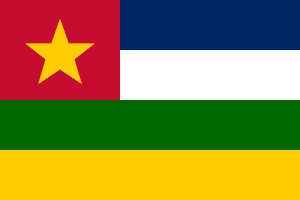Language/Pulaar/Grammar/Future-Tense
Hi Pulaar learners! 😊
In this lesson, we will learn about one of the most important tenses in Pulaar, the Future Tense. The future tense is used to talk about actions or events that haven't happened yet, but are expected to happen in the future.
Let's learn how to form this tense in Pulaar!
Consider exploring these related pages after completing this lesson: Conditional Mood & How to Use Be.
Formation of the Future Tense[edit | edit source]
To form the future tense in Pulaar, we use the auxiliary verb "gejje" before the verb in its simple present form. "Gejje" means "will" in English.
For example, let's take the verb "yaaɓe" which means "to write" in English. To say "I will write" in Pulaar, we say "mi gejje yaaɓe".
Here's a table to help you understand how the future tense is formed:
| Pulaar | Pronunciation | English |
|---|---|---|
| mi gejje yaaɓe | mee geh-jeh yah-beh | I will write |
| nde gejje yaaɓe | ndeh geh-jeh yah-beh | you (singular) will write |
| ɗum gejje yaaɓe | doom geh-jeh yah-beh | he/she/it will write |
| mi gejje yaaɓatnoo | mee geh-jeh yah-bat-noo | we will write |
| nde gejje yaaɓatnoo | ndeh geh-jeh yah-bat-noo | you (plural) will write |
| ɗum gejje yaaɓatnoo | doom geh-jeh yah-bat-noo | they will write |
Note that the verb in the future tense is always in its simple present form, regardless of whether the subject is singular or plural.
Here's another example with the verb "tuɗɗe" which means "to learn" in English:
| Pulaar | Pronunciation | English |
|---|---|---|
| mi gejje tuɗɗe | mee geh-jeh too-ɗe | I will learn |
| nde gejje tuɗɗe | ndeh geh-jeh too-ɗe | you (singular) will learn |
| ɗum gejje tuɗɗe | doom geh-jeh too-ɗe | he/she/it will learn |
| mi gejje tuɗɗatnoo | mee geh-jeh too-ɗaht-too | we will learn |
| nde gejje tuɗɗatnoo | ndeh geh-jeh too-ɗaht-too | you (plural) will learn |
| ɗum gejje tuɗɗatnoo | doom geh-jeh too-ɗaht-too | they will learn |
Now that we know how to form the future tense in Pulaar, let's see some examples in context:
- Person 1: Ɓanndirɗo mi gejje miin? (When will you come?)
- Person 2: Nde gejje mang miti? (Will you come with me?)
In these examples, we see how the auxiliary verb "gejje" is used to form the future tense.
Irregular Verbs in the Future Tense[edit | edit source]
Some verbs in Pulaar have irregular stems in the future tense. For example, the verb "eɗe" which means "to come" in English, has an irregular stem "yaage" in the future tense.
Here's a table with some examples of irregular verbs in the future tense:
| Pulaar | Pronunciation | English |
|---|---|---|
| mi gejje yaage | mee geh-jeh yah-geh | I will come |
| nde gejje yaage | ndeh geh-jeh yah-geh | you (singular) will come |
| ɗum gejje yaage | doom geh-jeh yah-geh | he/she/it will come |
| mi gejje naange | mee geh-jeh naah-geh | I will see |
| nde gejje naange | ndeh geh-jeh naah-geh | you (singular) will see |
| ɗum gejje naange | doom geh-jeh naah-geh | he/she/it will see |
Using the Future Tense with Cultural Information[edit | edit source]
In Pulaar culture, the future tense is often used to talk about plans or intentions. For example, if someone is planning to go to the market later in the day, they might say "Mi gejje wanduɓe mo" which means "I will go to the market later".
Additionally, it's common to use the future tense when making promises or commitments. For example, if someone promises to come to your house tomorrow, they might say "Nde gejje miin" which means "I will come".
To improve your Pulaar Grammar, you can also use the Polyglot Club website. Find native speakers and ask them any questions!
Sources[edit | edit source]
➡ If you have any questions, please ask them in the comments section below.
➡ Feel free to edit this wiki page if you think it can be improved. 😎

